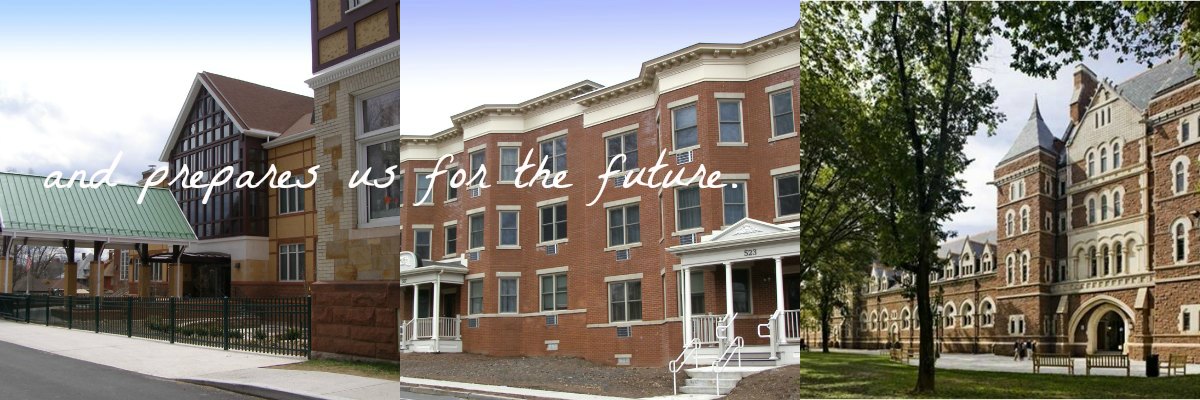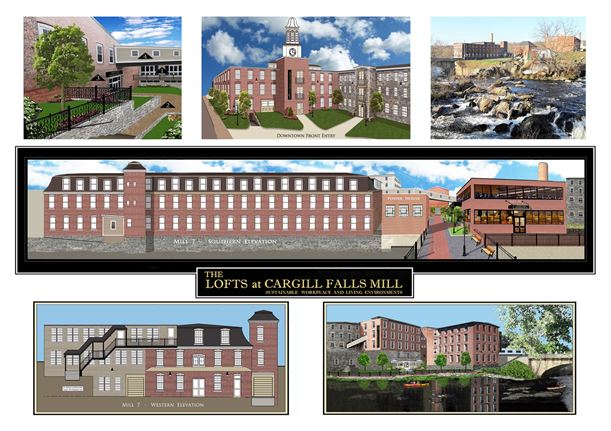Last week I visited one of the quiet corners of Connecticut, Putnam. Honestly I had skirted he city many times on my way between Hartford and Providence but never actually driven into the city. My purpose was to visit the Cargill Falls Mill. This project represents “a renaissance of America’s oldest mill site merging environmental sustainability with historic character.” I met with the visionary couple, Greg Renshaw and Leanne Parker, to walk the site and discuss a minor role which we might play in the Lofts at Cargill Falls Mill.
What I discovered is perhaps one of the most exciting and transformative projects in Connecticut. Take a site containing the oldest extant mill laying along the Quinnebaug River (which is lovely!) in various forms of decay and in need of lots of money to renovate and reuse, add the commitment to harness the River to produce hydroelectric energy and the vision to produce 82 units of housing and you have a dream defining wizardry or insanity.
Over many decades I have learned that truly good developers of historic places have the power to see vacant and abandoned buildings alive and thriving once again. The successful projects ignore reality and see the finished development, always keeping in sight that it can happen and never losing the belief that with time and patience it will happen. What most impresses me is the determination to bring hydroelectric power to the Mill Lofts as if the complete and total renovation of fours dilapidated buildings is not a sufficient challenge. Think about the additional hurdles of dealing with the environmental and regulatory roadblocks inherent in fooling with a river and adding electric production to the grid! By the way, there was an attempt to build a new bridge over the river but that’s a story for another day.
The mill buildings, there are four, date from the 1800’s to 1950’s and each has a distinct architectural style. Visually engaging, the four buildings follow the banks of the river. As Greg and Leanne point out, this is most fortunate in that the complex has a very strategic southern exposure. All the residential units will enjoy amazing light. We typically see mill buildings as monoliths. Cargill Mills appears as a village of different materials and styles due to the eras in which each addition was added. Yet practically speaking imagine the process simply to gain approval of the National Park Service for plans to complete an historic restoration. Oh, do not forget that a river runs through it! Actually the flow does in fact run under parts of the site and is channeled to produce energy. The wisdom of the Yankee mill developers in harnessing the power of water is now to be re-purposed to produce electricity.
There is more to write about and tell of this exciting project. Pictures are to follow as a series of before images. The Lofts at Cargill Falls Mill is to be an interesting work in progress. Our role is minor but strategic in a financial collaboration to bring more resources, generated through the State of Connecticut Historic Rehabilitation Tax Credits, to aid in producing greater equity for the development. Stay tuned for more information and to be a witness to this amazing project.
[jetpack_subscription_form]







